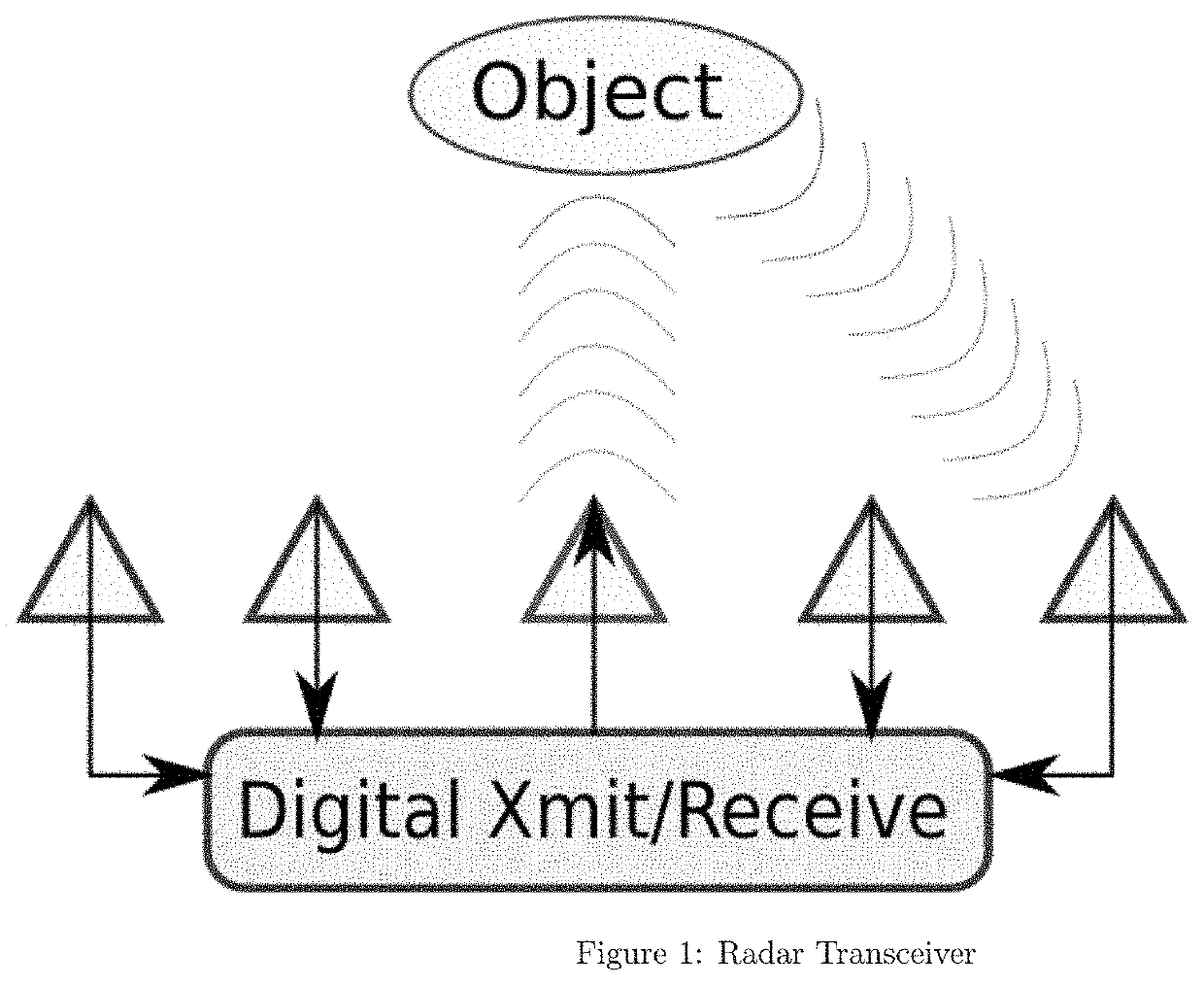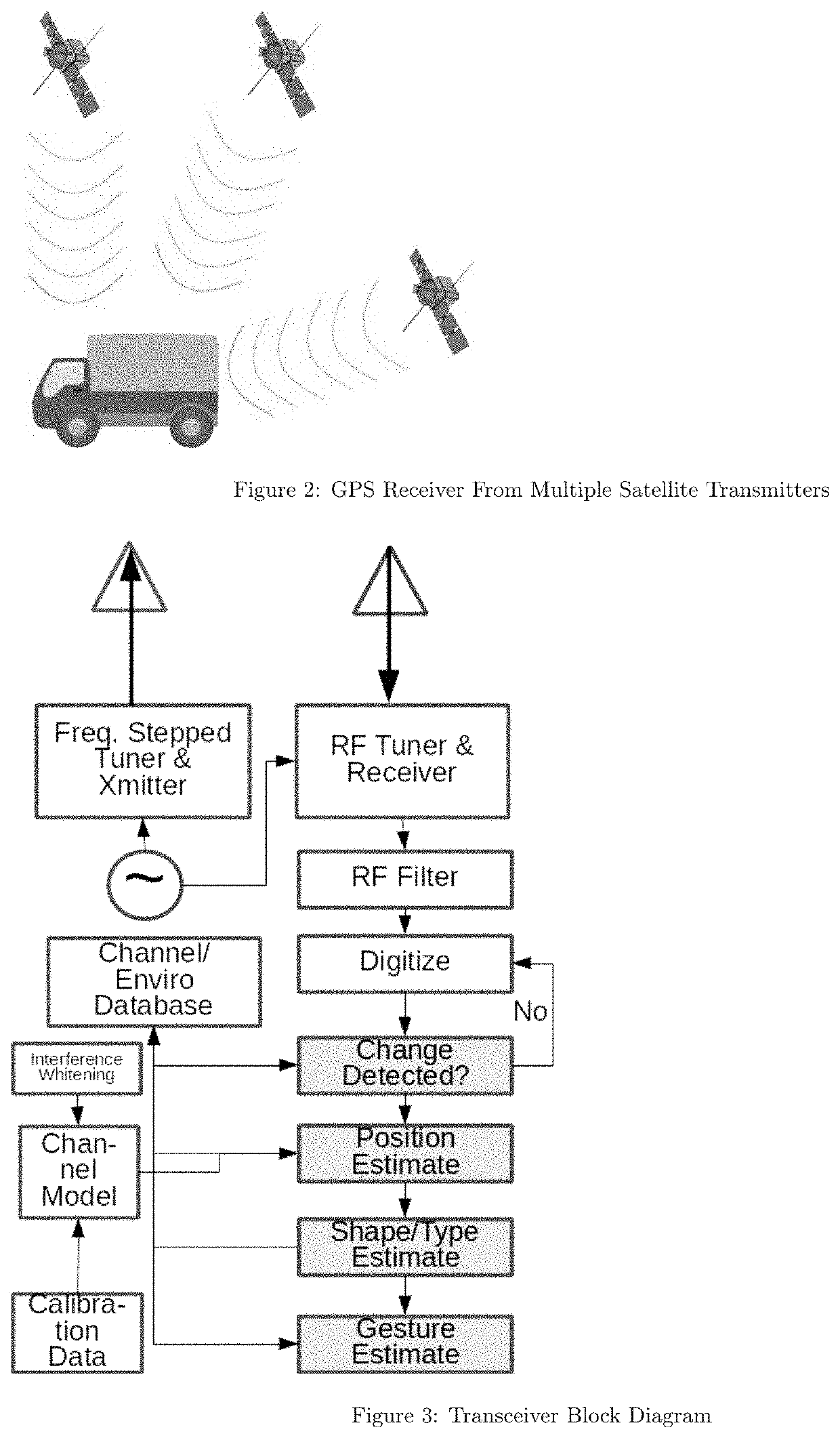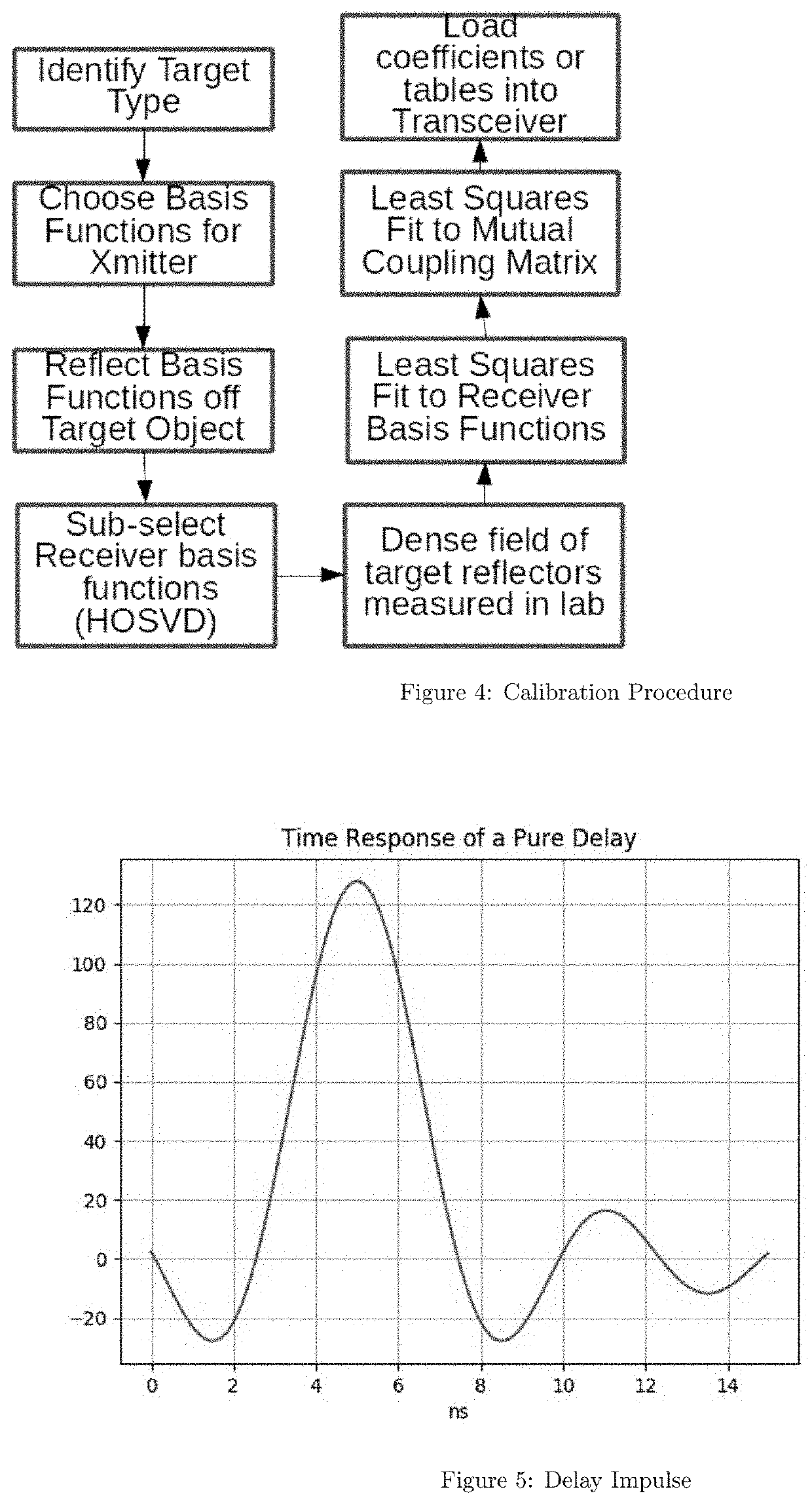Bayesian Geolocation and Parameter Estimation by Retaining Channel and State Information
a technology of state information and geolocation, applied in the field of bayesian geolocation and parameter estimation by retaining channel and state information, can solve the problems of missing additional considerations for these techniques to achieve their full potential, previous techniques are potentially very sensitive to calibration errors, and do not address near field channels which need to be modeled
- Summary
- Abstract
- Description
- Claims
- Application Information
AI Technical Summary
Benefits of technology
Problems solved by technology
Method used
Image
Examples
Embodiment Construction
[0026]While the invention is susceptible to embodiments in many different forms, there are shown in the drawings and will be described in detail herein the preferred embodiments of the present invention. It should be understood, however, that the present disclosure is to be considered an exemplification of the principles of the invention and is not intended to limit the spirit or scope of the invention and / or claims of the embodiments illustrated.
[0027]System Model
[0028]The invention proposes in one or move embodiments a general receiver model that can be utilized for localization, object classification or even medical imaging. The model focuses on a set of views of the environment that depend on a parameter vector of interest p. Consider a diverse set of K observations of an emitter (or passive scatterer) on one or more multi-antenna receivers / sensors. The observations are indexed by k for k=1:K. The “receivers” may in fact be simply a view of the signal of interest at K different ...
PUM
 Login to View More
Login to View More Abstract
Description
Claims
Application Information
 Login to View More
Login to View More - R&D
- Intellectual Property
- Life Sciences
- Materials
- Tech Scout
- Unparalleled Data Quality
- Higher Quality Content
- 60% Fewer Hallucinations
Browse by: Latest US Patents, China's latest patents, Technical Efficacy Thesaurus, Application Domain, Technology Topic, Popular Technical Reports.
© 2025 PatSnap. All rights reserved.Legal|Privacy policy|Modern Slavery Act Transparency Statement|Sitemap|About US| Contact US: help@patsnap.com



